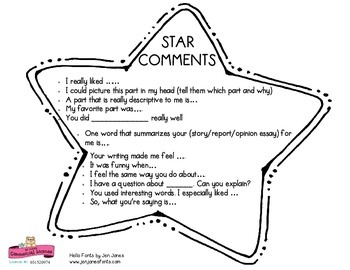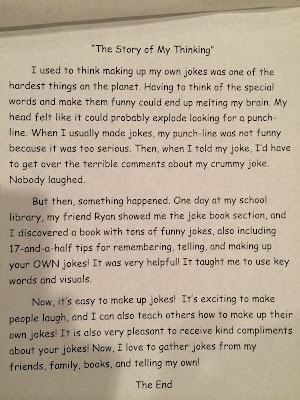Summer is a great time to catch up on the vast array of children's books that my students are reading in class. I love to be able to have a discussion with kids about books they've chosen for Independent Reading time that I've actually read! (It certainly feels a little more authentic.) 🙂📚 Of course it's impossible to read everything, but I try to stay current with the popular literature trends.This is also true of books that I'm thinking about reading aloud to my class. I think it's important to read it on my own first, as not all books work well as a read-aloud.
Reading experts continue to stress the importance of reading aloud to kids. When we as teachers read stories to our students, we are modeling expert fluency and expressive reading. It also exposes them to more vocabulary (often higher level) and provides an excellent opportunity to discuss plot, theme, genre, and other literary devices in a relaxed atmosphere; the students get to enjoy the story without any pressure of being assessed. We can model the joy of reading for pleasure!
Here is a list of some of my current favorites:
1. The Most Magnificent Thing by: Ashley Spires
I absolutely love this newer picture book! I read it at the beginning of the school year to "set the stage" for Growth Mindset and perseverance in problem-solving. It's about a girl who attempts to create inventions with the help of her dog and goes through trial after trial to "get it right."
2. Be a Perfect Person in Just Three Days by: Steven Manes
This is an old one; a short chapter book that can be read in a couple of days. It focuses on a boy, Milo, who accidentally finds a how-to book in the library about becoming perfect. He decides to follow the instructions step-by-step only to realize in the end that perfection doesn't really exist and is not necessary to a happy and successful life. It's very funny and a great story to read in the beginning of the year before doing goal setting.
3. The One and Only Ivan by: Katherine Applegate
This is a fictional story based on the real gorilla Ivan who lived in a mall cage for 27 years before being adopted by the Atlanta Zoo. The story is told in first-person from the point of view of Ivan the gorilla who makes artwork in his cage. Also with him are Stella, an aging elephant, and Bob a stray dog who is brought to the mall enclosure. Ivan realizes that his life is not what he wants it to be and with the help of George, the mall custodian, and his daughter Julie, they work to get the Big Top Mall closed down and Ivan and the other animals moved to a zoo. The students really love this story!
4. Buddy by M.H. Herlong
The story is set in New Orleans during the time of Hurricane Katrina in 2005. A boy adopts a stray dog and quickly grows attached to his new companion. However, when the family must evacuate their home before Katrina hits, the dog is left behind. After the storm, the boy embarks on a journey to find his missing dog, unsure if he is still alive or not. It is heart-warming, emotional, and filled with life lessons. My students the past four years have ranked this book in their top ten.
5. Swindle by: Gordon Korman
I just love this first book in the series about 6th grader Griffin Bing and his gang of crafty and skilled friends. In this story, Griffin and his friend Ben find a rare Babe Ruth baseball card and take it to get it appraised, but they're told it is a fake. After finding out it was really worth close to a million dollars, Griffin comes up with a plan to steal it back and enlists the help of his friends, each of whom possesses a special skill which will help make the plan work.
6. Fish in a Tree by: Lynda Mullaly Hunt
I just discovered this amazing novel last summer and read it in a day and a half! It's about Ally, a trouble-maker in school who struggles academically. However, with one special teacher's help, she discovers her problems stem from Dyslexia. She learns ways to overcome her disability and her teacher helps her to see that she is smarter than she thought she was.
7. Rain, Reign by: Ann Martin
Rose is the main character in this story and she has high-functioning autism. She sees the world in a different way from those around her. One of her obsessions is with homonyms and she is fascinated that her name is one. When she finds a dog abandoned in the rain, she naturally names him "Rain" which has a homonym as well (Reign). She finds comfort in repetition and routine, but when her dog disappears after a bad storm, she goes out of her "comfort zone" to go look for him. This story lends itself to some great discussions about differences in people (especially with the current autism rate being 1 in 68 and chances are you probably have at least one student on the spectrum in your classroom each year.)
8. Back of The Bus by: Aaron Reynolds
This is a powerful historical fiction picture book about a boy and his mother who are riding on a bus in Montgomery, Alabama in 1955 when something big happens; Rosa Parks refuses to move to the back of the bus and police move in to arrest her. GREAT book!
9. Enemy Pie by: Derek Munson
This is another picture book with a great message: treat others the way you would want to be treated, and don't judge people before you get to know them. The main character's dad helps him find a way to deal with the new boy on the street who is thought to be a bully (there's a plot twist at the end which is so fun for the kids).
10. James and The Giant Peach by: Roald Dahl
In my opinion, Roald Dahl is the king of funny kid-centered fiction and I had to include one of my favorites here. Even though this book has been around for a long time, most of my students the past 6 or 7 years have been unfamiliar with it, and so it's been super fun to read aloud. The main character, James, loses his parents (they're run over by a rhinoceros) and he is forced to go live with his crazy aunts: Aunt Sponge and Aunt Spiker. He accidentally drops some magic crystals near a peach tree in the backyard and an adventure ensues. It's fun fantasy-fiction that the kids love and will laugh out loud when you read it!!
What are some of
your favorite read-aloud books that I could add to my list for next year? 📖 Please share in the comments below!













